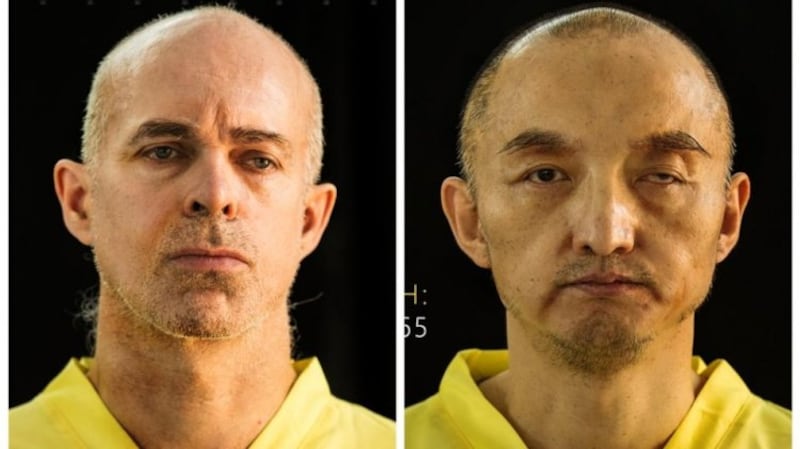Islamic State’s online magazine has published a photo on Wednesday of a Schweppes drink it said was used to make an improvised bomb that brought down a Russian airliner over Egypt’s Sinai Peninsula last month, killing all 224 people on board.
The photo showed a can of Schweppes Gold soft drink and what appeared to be a detonator and switch on a blue background, three simple components that if genuine are likely to cause concern for airline safety officials worldwide.
"The divided Crusaders of the East and West thought themselves safe in their jets as they cowardly bombarded the Muslims of the Caliphate," the English language Dabiq magazine said in reference to Russia and the West. "And so revenge was exacted upon those who felt safe in the cockpits."

Western governments have said the plane was likely brought down by a bomb and Moscow confirmed on Tuesday it had reached the same conclusion, but the Egyptian government says it has still not found evidence of criminal action.
Islamic State also published a photo of what it said were passports belonging to dead Russians “obtained by the mujahideen”. It was not immediately possible to verify the authenticity of the published photos.
‘Loophole exploited’
The group said it had exploited a loophole at Sharm al-Sheikh airport, where the plane originated, in order to smuggle a bomb on board.
The airport is widely used by budget and charter airlines to fly tourists to the nearby resorts on the Sinai coast.
Islamic State said it had initially planned to bring down a plane belonging to a country participating in the US-led coalition bombing it in Syria and Iraq, but it changed course after Moscow started its own air strikes campaign in Syria.
“A bomb was smuggled onto the airplane, leading to the deaths of 219 Russians and five other crusaders only a month after Russia’s thoughtless decision,” it said.
Egypt’s interior minister told a news conference in Sharm al-Sheikh on Tuesday that there was “no information” about security lapses at the airport.
Islamic State’s Egyptian branch, Sinai Province, claimed responsibility for the attack the day it happened but Egyptian officials were quick to dismiss talk of a bomb as premature.
Egypt is battling an Islamist insurgency in the Sinai, a strategic peninsula bordering Israel, Gaza and the Suez Canal. Islamic State said the airline attack was primarily planned as a response to Russian and Western air strikes.
‘No safety’
“This was to show the Russians and whoever allies with them that they will have no safety in the lands and airspace of the Muslims,” the group wrote. “That their daily killing of dozens in (Syria) through their air strikes will only bring them calamities.”
Russia, an ally of Syrian President Bashar al-Assad, launched air strikes against opposition groups in Syria including Islamic State, on September 30th.
Since the attacks on Paris, both Russia and France have stepped up the tempo of air strikes.
The downed Russian aircraft, an Airbus A321 operated by Metrojet, had been carrying Russian holidaymakers from the Egyptian resort to St Petersburg when it broke up over Sinai.
On Tuesday, Russian President Vladimir Putin vowed to hunt down those responsible for blowing up the plane and offered a $50 million (€47 million) reward for information leading to those responsible.
“We will find them anywhere on the planet and punish them,” Mr Putin said of the plane bombers at a sombre Kremlin meeting.
Alexander Bortnikov, the head of Russia’s FSB security service, said traces of foreign-made explosive had been found on fragments of the downed plane and on passengers’ personal belongings. He said the bomb probably contained around 1kg of TNT.
Egypt has not officially given a reason as to why the plane was brought down, calling on all sides to await the official results of an investigation carried out by an Egyptian-led team.
The government said it would “take into consideration” Russia’s findings but that it was yet to find any evidence of criminal action bringing down the plane.
Islamic State also claimed it has killed Norwegian and Chinese captives after earlier demanding ransoms for the two men.
Extremist group
The extremist group published two images of the men in the second-to-last page of its English-language magazine Dabiq, saying they had been “executed after being abandoned by kafir nations and organisations”.
“Kafir” is the Arabic word for infidel.
In the images, the men both appeared to have been shot dead.
The group had earlier identified the Norwegian man as Ole Johan Grimsgaard-Ofstad, (48), from Oslo, and the Chinese man as Fan Jinghui, (50), a freelance consultant from Beijing. It did not say when or where the two were captured.
Islamic State controls large areas in Iraq and Syria. The killing of the two men stood in contrast to other filmed beheadings and atrocities carried out by the group since seizing a third of Iraq in a lightning advance in 2014.
The demand for a cash ransom also stood in contrast to the group’s other hostage demands.
The announced killings come as Islamic State militants face increasing air strikes from a variety of countries including the US, Russia and France, as well as ground attacks from Kurdish and other forces.
Reuters












